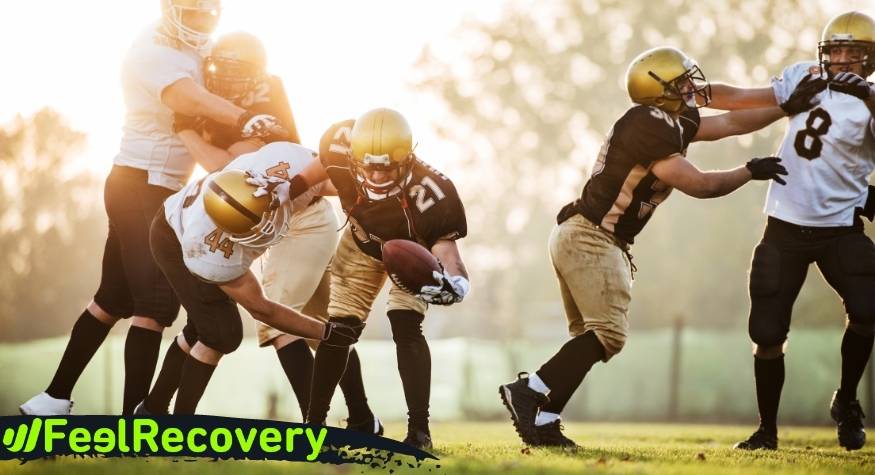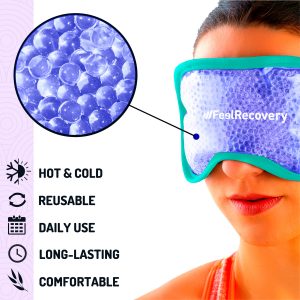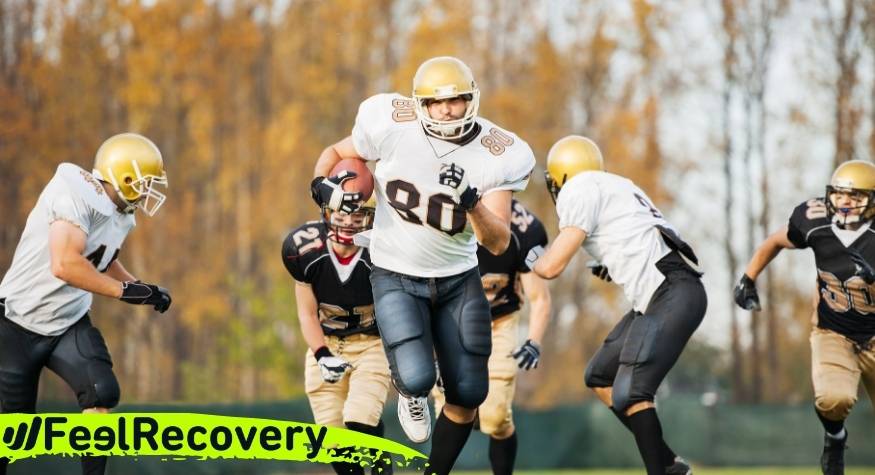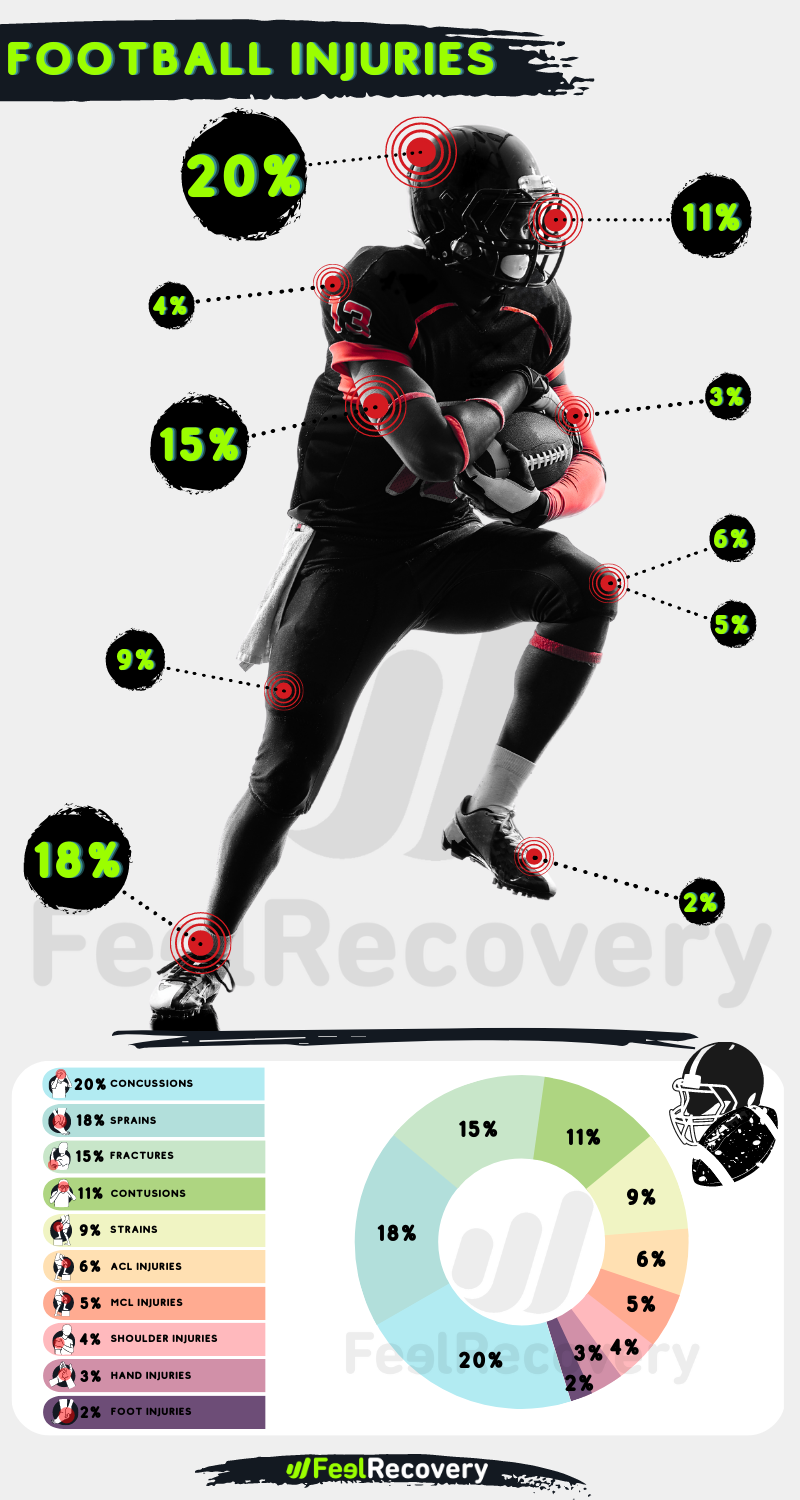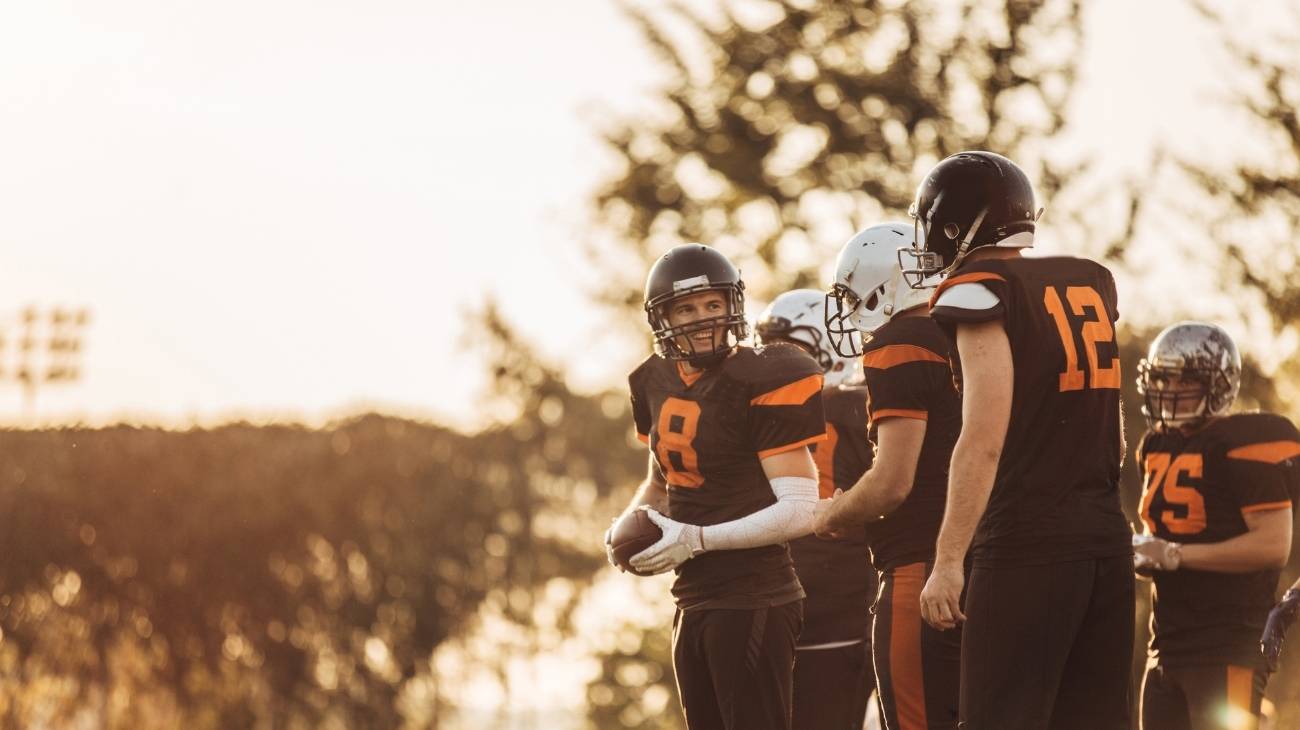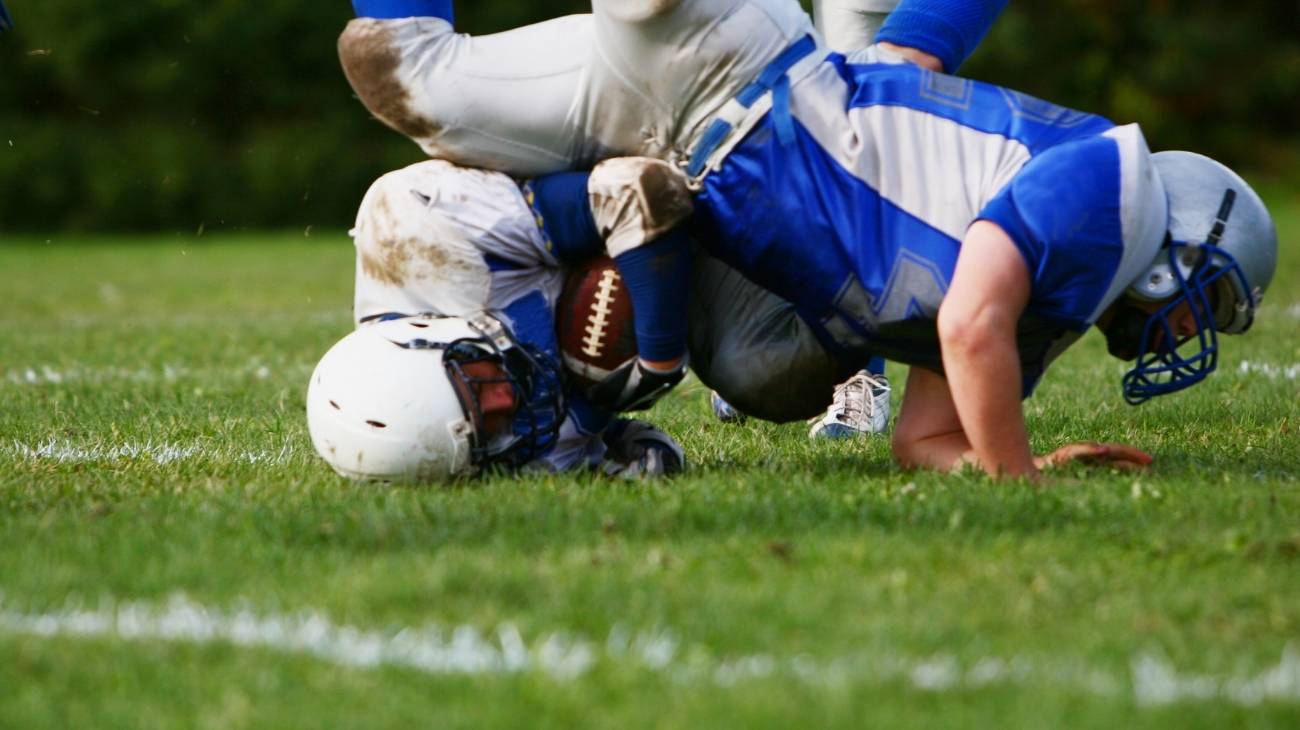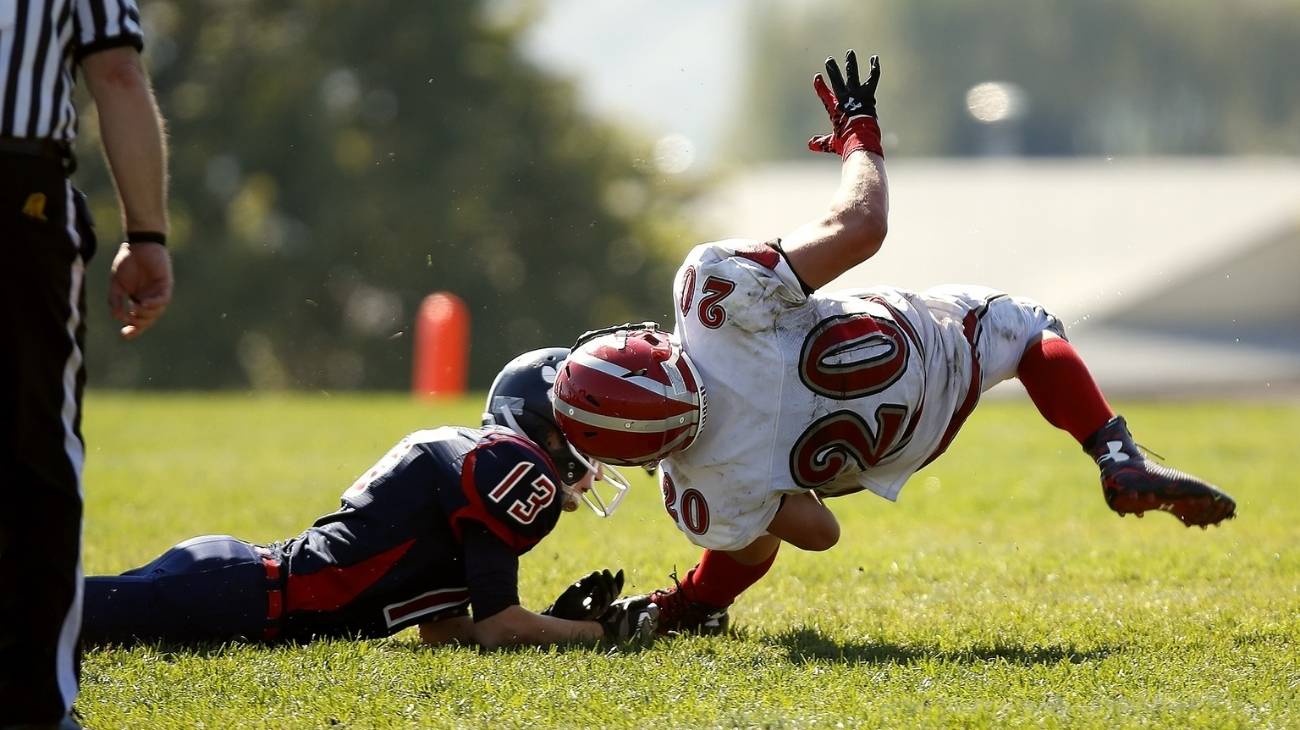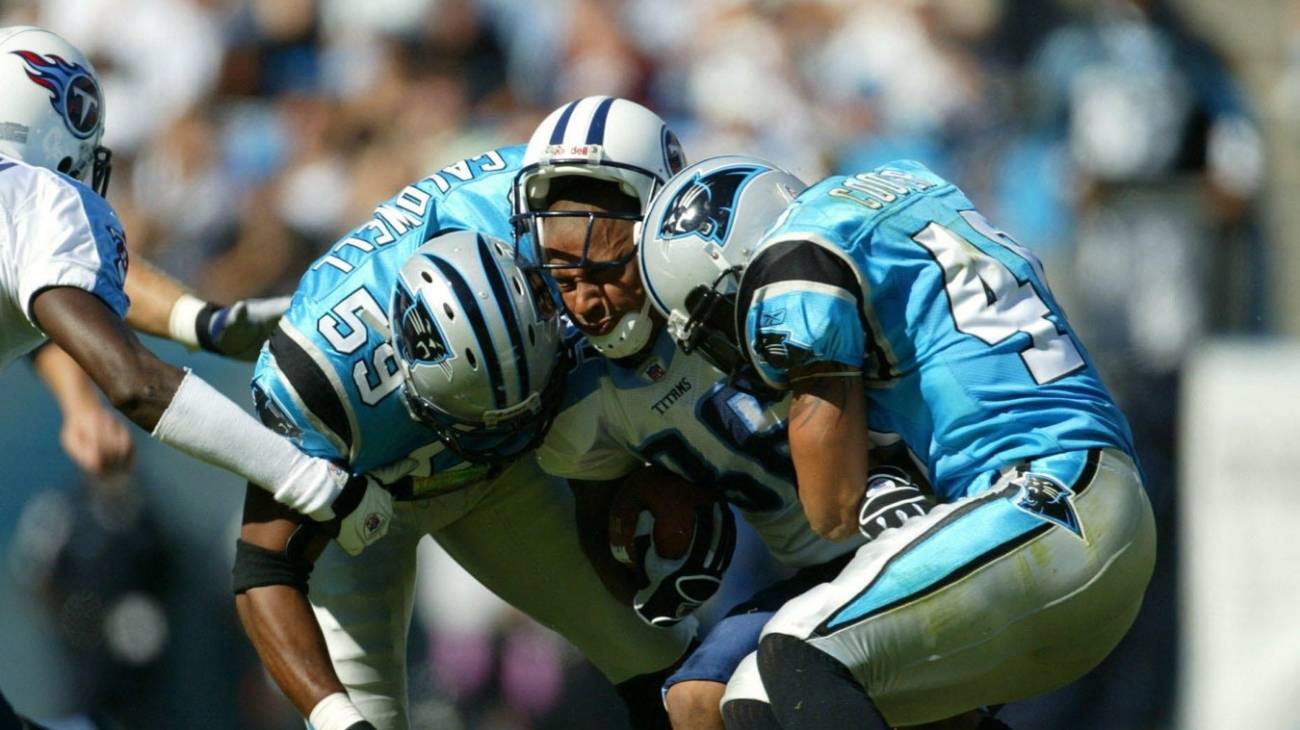Although football is the favorite sport in the United States and Canada, for years it has been surrounded by criticism due to the intensity and violence registered in the games. Last season alone there were more than 280 players with concussions, one of the most serious injuries in the sport.
For this reason, in this article you will learn which are the most effective methods to prevent an injury in football, you will find the training phases, conventional therapies and alternative therapies. In addition, you will learn about the most common injuries you will face if you want to become a professional player.
What are the most common types of football injuries?
Whenever you start a training session or go to an official game, you should keep in mind that most injuries can be avoided. The first thing you should do is to know what are these most common injuries in football players so you can start taking precautions:
- Ruptured cruciate ligaments: These are ligaments that run through the center of the knee and, although they are resistant, they rupture in the event of hard falls and sudden movements while the foot is fixed on the ground.
- Collateral ligament sprains: Although these are contact injuries, they also occur due to wear and tear and ligament fatigue that causes the knee to go sideways with an imbalance.
- Meniscal tears: Each knee has two menisci, these provide stability in the joint, but as they are composed of cartilage when they wear out it is usually a degenerative disease.
- Ankle sprain: It is generated when the ankle ligaments are overextended and exceed the capacity of ligamentous elasticity. Although this joint is small, it supports great tension.
- Degeneration of the calf muscles: These are muscle groups located in the thigh and allow traction when running and rotating. When they wear out, they lose their flexibility and elasticity.
- Muscle contractures: This is perhaps one of the most minor injuries that can occur in football. It is the irregular bunching of muscle fibers and causes localized pain. It may take several days for the fibers to relax.
- Dislocations: It is the separation of the bone from the joint. The most common dislocations are in the shoulder and knee. The only way to get relief is to mechanically reposition the bone.
- Tendonitis: Constant physical activity causes tendons to become irritated and inflamed. Sometimes these signs are not attended to, then the tendon ruptures in some of its fibers.
- Contusions: The NFL estimates that by the end of each season, 90% of its players will have some level of head contusion that affects brain function. Despite the fact that helmets are resistant, players suffer these types of injuries.
- Pubalgia: This is an imbalance of strength in the complex hip joint system that causes pain and swelling in the pubic area. Running, jumping and repeated kicking the ball cause this common ailment.
- Displaced discs: One of the most serious injuries due to the fact that the intervertebral discs move from their center and are deformed by the blows from behind that athletes receive. It is a degenerative disease that is initially corrected with rest.
- Fractures: The most frequent in football is the clavicle fracture due to its fragility and horizontal location in the upper part of the shoulder. If it is in the form of a crack, it is not necessary to perform a surgical intervention.
Best products for football injury recovery
Bestseller
-
2 Calf Compression Sleeve (Black/Gray)
$19.95 -
2 Calf Compression Sleeve (Green/Navy)
$19.95 -
2 Calf Compression Sleeve (Pink/Bordeaux)
$19.95 -
2 Knee Compression Sleeve (Black/Gray)
$19.95 -
2 Knee Compression Sleeve (Green/Navy)
$19.95 -
2 Knee Compression Sleeve (Pink/Bordeaux)
$19.95 -
2 Thigh Compression Sleeve (Black/Gray)
$19.95 -
2 Thigh Compression Sleeve (Green/Navy)
$19.95 -
2 Thigh Compression Sleeve (Pink/Bordeaux)
$19.95 -
Acupressure Mat and Pillow (Black/Gray)
$49.95 -
Acupressure Mat and Pillow (Green/Navy)
$49.95 -
Acupressure Mat and Pillow (Pink/Bordeaux)
$49.95 -
Acupressure Pillow (Black/Gray)
$29.46 -
Acupressure Pillow (Green/Navy)
$29.46 -
Acupressure Pillow (Pink/Bordeaux)
$29.46 -
Back Support Belt (Black)
$34.95 -
Back Support Belt (Green)
$34.95 -
Back Support Belt (Pink)
$34.95 -
Foot Massage Roller for Plantar Fasciitis (Black)
$19.95 -
Foot Massage Roller for Plantar Fasciitis (Green)
$19.95 -
Foot Massage Roller for Plantar Fasciitis (Pink)
$19.95 -
Gel Eye Mask for Puffy Eyes (Gold/Black)
$11.95 -
Gel Eye Mask for Puffy Eyes (Orange/Pink)
$11.95 -
Gel Eye Mask for Puffy Eyes (Purple/Turquoise)
$11.95 -
High Density Foam Roller for Muscle (Black/Gray)
$29.95 -
High Density Foam Roller for Muscle (Green/Navy)
$29.95 -
High Density Foam Roller for Muscle (Pink/Bordeaux)
$29.95 -
Ice Massage Roller Ball (Black)
$39.95 -
Ice Massage Roller Ball (Green)
$39.95 -
Ice Massage Roller Ball (Pink)
$39.95 -
Microwave Heating Pad for Back Pain Relief (Extra Large) (Hearts)
$29.95 -
Microwave Heating Pad for Back Pain Relief (Extra Large) (Oxford)
$29.95 -
Microwave Heating Pad for Back Pain Relief (Extra Large) (Sport)
$29.95 -
Microwave Heating Pad for Neck & Shoulder Pain Relief (Hearts)
$24.95 -
Microwave Heating Pad for Neck & Shoulder Pain Relief (Oxford)
$24.95 -
Microwave Heating Pad for Neck & Shoulder Pain Relief (Sport)
$24.95 -
Microwave Heating Pad for Neck Pain Relief (Hearts)
$19.95 -
Microwave Heating Pad for Neck Pain Relief (Oxford)
$19.95 -
Microwave Heating Pad for Neck Pain Relief (Sport)
$19.95 -
Pack 2 In 1 Foam Roller High + Soft Density (Black/Gray)
$29.95 -
Pack 2 In 1 Foam Roller High + Soft Density (Green/Navy)
$29.95 -
Pack 2 In 1 Foam Roller High + Soft Density (Pink/Bordeaux)
$29.95 -
Shoulder Support Brace (Black)
$24.95 -
Shoulder Support Brace (Green)
$24.95 -
Shoulder Support Brace (Pink)
$24.95 -
Soft Density Foam Roller for Recovery (Black)
$29.95 -
Soft Density Foam Roller for Recovery (Green)
$29.95 -
Soft Density Foam Roller for Recovery (Pink)
$29.95 -
Trigger Point Massage Stick (Black)
$14.95 -
Trigger Point Massage Stick (Green)
$14.95 -
Trigger Point Massage Stick (Pink)
$14.95
List of injury prevention methods for football players
Both the NFL and the CFL (American League and Canadian League, respectively) agree that most minor and serious injuries occur in games, when the players' spirits and intensity are highest. In training, injuries are less likely to occur due to eventual trauma.
Performing a good warm-up
It is common for amateur athletes not to recognize the proper importance of warming up before exercising. However, this phase of preparation has several benefits, such as progressively increasing body temperature and improving blood flow to the muscles.
When the blood supply is regulated, this helps to prevent an increase in the pain threshold. It also avoids the muscle wasting involved in training, and when wasting is avoided there is a better distribution of the body load on other tissues and bones.
Preparing the muscles allows to increase their capacity for flexibility and elasticity, thus reducing the probability of feeling eventual contractures and cramps after finishing the round of exercises. You should always start by giving mobility to all the joints of the body and try to offer a stretch to both the extremities and the torso. Remember that, in football, every area of the human body is activated.
Finish your workouts with a cool-down
This phase of physical preparation is just as important as the warm-up. Here we prepare the body to return to its initial state of relaxation and allow the body to be ready for a new round of intense exercise.
The cool-down, as this stage of sports training is also known, consists of restoring all vital signs. If we omit this step, we increase the probability of having sequelae such as cramps and muscle wasting, which are unnecessary and detrimental to good performance.
By cooling the body you allow the heart rate to re-regulate, the pulmonary activity to slow down and the blood irrigation to decrease. As long as the regulation of vital signs is gradual, you can give the body the possibility to be prepared for future training without negative consequences.
Take a few minutes to walk, cycle and re-stretch the parts of the body that you feel tense and where you know there may be a possible injury. The most harmful thing you can do is to suddenly stop physical activity and then lie down or take a shower, that will only cause muscle atrophy.
Good nutrition and hydration
The position of the player, the season in which the games are played and even the type of body performance desired will define the type of diet an athlete can have throughout his career. However, any balanced diet should have a base of proteins and carbohydrates.
During workouts there must be a high intake of protein, which is the fuel of the muscles. Without this component the muscle fibers would not have enough strength to keep up the pace of the game and withstand the heavy blows of opponents and falls on the field. In addition, good nutrition ensures that body cells damaged in competitions can regenerate satisfactorily because they already have enough time with the components that the body demands.
The same applies to hydration. The uniform, the protection of the players, the weather and the physical demands are risk factors that will cause your body to dehydrate quickly. For this reason you should drink water frequently. Even take energy drinks when you need more electrolytes in your body.
How to stay well hydrated? During workouts drink water every 20 minutes and in small amounts, avoid reaching the point where your body is thirsty, at this point it has already begun a process of dehydration.
Improve your physical condition
Although the prevalence of strength, endurance and agility will depend on the position each player is in, a common factor that all 11 players share on the field is that they must have a high anaerobic system.
It is a matter of the body knowing how to take advantage of all the resources it has to have a resistance to intense and brief activities at the same time. Each football game has four quarters, ranging between 12 and 15 minutes each, so there is no wear and tear for long periods of mobility.
A football player's body must be robust and have good muscle mass, but there must be a balance to withstand trauma and be agile at the same time, like running backs who need to get around the opponent's defensive line and protect the ball.
Perhaps a defensive back requires more muscle hypertrophy, when the muscle system in the body is better prepared to deliver better tackles. Several NFL studies relate the level of play to better physical conditions.
Sports massage
Over the years, sports massages are no longer part of the list of alternative methods to treat injuries. There is now enough scientific evidence to use sports massage as a tool to improve muscle performance and avoid possible injuries.
A good massage prepares the muscles to support the sports activity, it is as if it were a warm-up because it also regulates the body temperature and relaxes the muscle fibers to avoid stiffness. These massages are also used as a form of relief during some mild and moderate injuries.
In addition, it helps the athlete get closer to his or her highest level of performance and allows the blood supply to remain elevated in order to bring more nutrients to the muscle fibers.
One of the contraindications of massage is that it should not be applied when there are physical injuries such as severe sprains and fractures, where an inflammatory process is present in the body. As long as there is swelling, the body should not receive sports massages.
Use of hot and cold therapies
Cold lowers the amount of blood passing through the affected area. Ice is often used to relieve pain, control joint swelling and prevent bruising and edema from spreading after trauma.
As a contraindication, you should only try to apply ice with the support of a material that transfers cold, such as cloth. Using ice directly on the skin will only generate slight burns that will complicate recovery. Do not abuse its use, do not exceed 30 minutes in the application of ice, then offer a 10-minute break.
At the same time, heat has the opposite effect on the body, but it is also effective in relieving pain or other types of injuries. It serves as a vasodilator which allows a better blood supply to the muscles, which favors recovery in terms of muscle fatigue.
It also concentrates and increases metabolic activity in the muscles and improves the performance of soft tissues such as ligaments and tendons. Try not to use heat immediately after training, nor when you feel tingling and numbness in the joints.
Use of compression garments
There is practically a type of compression garment for each part of the body, in general these serve to improve the athlete's performance and prevent major injuries when the body has already suffered an ailment.
As the recurrence of joint injuries is higher than in any other part of the body, most compression garments cover joints such as the shoulder, knee, elbows and ankles, despite the fact that the human body has dozens of less accessible joints.
Since the 1990s, compression garments began to be used in the sports world to maintain body heat without the need for physical activity and sweating. Prior to this decade, it was only used as part of postoperative treatments. The pressure on the body promotes blood circulation, increases muscle performance by 30%, and reduces fatigue or tiredness when the body is subjected to intense training.
Use of acupressure therapies
Acupressure is an alternative therapy that seeks to relieve muscle tension, called "Chi" energy, accumulated in some areas of the body and that with gentle touches of the hand can flow better. It is part of Traditional Chinese Medicine and is a sister therapy to acupuncture. The only difference with acupuncture is that acupuncture uses needles, while acupressure uses the palms of the hands, knuckles and fingers to make light and also deep pressure on muscle groups.
The principle of this practice states that the human being has hundreds of trigger points, reaction points and meridians through which Chi energy circulates, which increases with sports practice and often concentrates in a single area causing tension and discomfort.
It is a holistic therapy, so a qualified specialist will address body and mind at the same time. For there to be true relief, there must be a predisposition of the patient that will contribute in the process of mental and muscular relaxation.
Use of thermotherapy and cryotherapy
Both are specific therapies that seek, through cold and heat, to generate wellness to athletes who have chronic injuries, which require several days and several weeks of recovery. Using professional equipment, cryotherapy sessions use nitrogen and argon gas to reach sub-zero temperatures, thus eliminating damaged cells and allowing healthy cells to multiply. A cryotherapy session lasts only 5 to 10 seconds, depending on the part of the body.
Even cancer cells are killed by the extreme cold, which is why its application is also possible outside of sports. It is also possible to apply this type of cold on the skin, in a cutaneous way and through open surgeries, but in football the most frequent application is on the skin.
With the use of saunas and thermal bags, extreme heat is applied to all or part of the body. The use will depend on the type and location of the injury. The temperature that the body should reach is a maximum of 136 °F, so it represents a danger to exceed this level of heat.
Thermotherapy serves as a vasodilator, which allows a greater blood supply to the body, especially in the affected area. Increasing the heat relieves pain and better delivers the nutrients the muscle fibers need for recovery. In the long term, heat has a muscle analgesic and natural relaxant effect.
Use of good equipment
College and professional leagues in the United States and Canada require each player to have at least six protective garments on his body to lower the chance of serious injury in games, where most injuries are concentrated.
- Helmets: It is the most important piece because it avoids a great number of contusions and cranial fractures that can cause damage to the brain mass and even generate paralysis and death.
- Breastplates: These should cover the shoulders, upper chest and part of the back. Without this item, the constant tackles of the opponents would cause muscular alterations and fractures.
- Elbow pads: This garment will prevent greater impact of blows on the elbows, whose reduced mobility makes it susceptible to frequent falls of the players.
- Gloves: They are used to provide a better grip of the player against his opponent and to cushion falls when trying to stop the force of the impact with the hands.
- Thigh pads: They have a compact padding, but resistant to tackles and falls. This prevents bruising, edema and major damage to the thigh muscles and femur bone.
- Cleats: They must be resistant, close to the foot and have a raised texture on the sole for better traction on the field of play.
References
- Saal, J. A. (1991). Common American football injuries. Sports medicine, 12, 132-147. https://link.springer.com/article/10.2165/00007256-199112020-00005
- Kelly, B. T., Barnes, R. P., Powell, J. W., & Warren, R. F. (2004). Shoulder injuries to quarterbacks in the national football league. The American journal of sports medicine, 32(2), 328-331. https://journals.sagepub.com/doi/abs/10.1177/0363546503261737
- Pellman, E. J., Viano, D. C., Casson, I. R., Arfken, C., & Powell, J. (2004). Concussion in professional football: Injuries involving 7 or more days out—Part 5. Neurosurgery, 55(5), 1100-1119. https://journals.lww.com/neurosurgery/Abstract/2004/11000/Concussion_in_Professional_Football__Injuries.14.aspx
- Bradley, J. P., Klimkiewicz, J. J., Rytel, M. J., & Powell, J. W. (2002). Anterior cruciate ligament injuries in the National Football League: epidemiology and current treatment trends among team physicians. Arthroscopy: The Journal of Arthroscopic & Related Surgery, 18(5), 502-509. https://www.sciencedirect.com/science/article/abs/pii/S0749806302348588
- Brophy, R. H., Wright, R. W., Powell, J. W., & Matava, M. J. (2010). Injuries to kickers in American football: the National Football League experience. The American journal of sports medicine, 38(6), 1166-1173. https://journals.sagepub.com/doi/abs/10.1177/0363546509357836
- Yang, J., Cheng, G., Zhang, Y., Covassin, T., Heiden, E. O., & Peek-Asa, C. (2014). Influence of symptoms of depression and anxiety on injury hazard among collegiate American football players. Research in sports medicine, 22(2), 147-160. https://www.tandfonline.com/doi/abs/10.1080/15438627.2014.881818
- Luke, A. C., Bergeron, M. F., & Roberts, W. O. (2007). Heat injury prevention practices in high school football. Clinical journal of sport medicine, 17(6), 488-493. https://journals.lww.com/cjsportsmed/Abstract/2007/11000/Heat_Injury_Prevention_Practices_in_High_School.9.aspx
- Gacek, M. (2015). Association between self-efficacy and dietary behaviours of American football players in the Polish Clubs in the light of dietary recommendations for athletes. Roczniki Państwowego Zakładu Higieny, 66(4). https://agro.icm.edu.pl/agro/element/bwmeta1.element.agro-4c51ea03-3e22-45c6-bf0d-3c214d929a81
- Abbey, E. L., Wright, C. J., & Kirkpatrick, C. M. (2017). Nutrition practices and knowledge among NCAA Division III football players. Journal of the International Society of Sports Nutrition, 14(1), 13. https://www.tandfonline.com/doi/full/10.1186/s12970-017-0170-2
- Smart, B. J., Haring, R. S., Asemota, A. O., Scott, J. W., Canner, J. K., Nejim, B. J., ... & Schneider, E. B. (2016). Tackling causes and costs of ED presentation for American football injuries: a population-level study. The American journal of emergency medicine, 34(7), 1198-1204. https://www.sciencedirect.com/science/article/abs/pii/S0735675716001649

